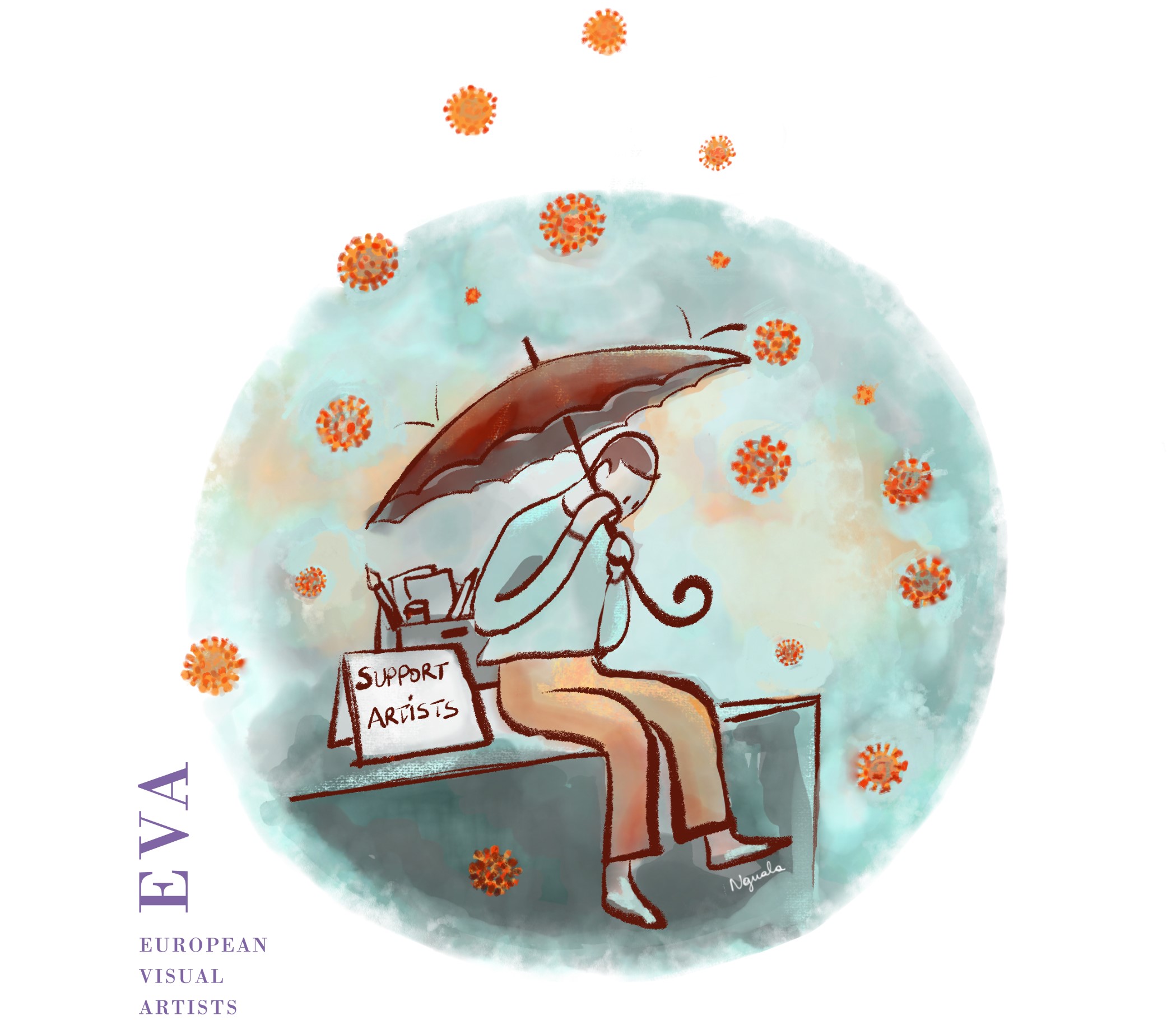This year started with an unprecedented crisis which rapidly swept throughout the whole world touching many aspects of our communities: health, economy, cultural events. Even every-day social relations are being restricted for public health reasons, to avert the expansion of the pandemic and finally get our lives back to normality. During this time of lockdowns in Europe and around the world, all economic sectors are impacted to some extent and after the health crisis, a lot will be needed to restart.
The same goes for Visual Artists, who are set to lose a great part of their (already unsteady) income this year. Indeed, one of the very first social distancing measures that governments took against the spread of the Covid-19 was to close museums, art galleries and auction houses along with theatres, cinemas and concerts. Those places are a fundamental source of income for most of Europe’s Visual Artists, who are now seeing cut any possibility of income from the exhibition of their works or from their sale and resale. Also month-long visibility opportunities for their repertoire that exhibitions normally bring is lost, worsening the impact on visual artists’ already unsteady income.

© Laetitia Nguala Masamba/European Visual Artists
Visual Artists are an important part of the cultural and creative industry in Europe and an essential component of any community’s culture. According to CISAC’s latest figures, the visual sector around the world has known a +19.9% copyright collections increase in the last 5 years (2014-2018), but it had already been declining in the last year (2017-2018) by -18.4%. Adding up to this already dire situation, the economic consequences of the Covid-19 crisis will deal unprecedented damage to Visual Artists’ livelihood. Many may be pushed to abandon their artistic occupation and opt for different economic sectors, whereas others may need to downgrade their artistic activity to hobbies, with a subsequent great damage to the number and diversity of works that are currently circulating. It is therefore necessary that policy-makers at all levels do whatever it takes to avoid a cultural catastrophe.
Visual Collective Management Organisations (CMOs) are already playing their role to ease the situation for their members. They are guaranteeing all essential lines of services to their members although their local and central offices needed to be closed. Some are also setting up emergency funds for artists and offering local and national governments to act as facilitators for the distribution of new public funds destined to artists. We encourage national governments to allocate public funds to cover for artists’ income losses. European visual CMOs are governments’ natural interlocutors for these initiatives as they have the structure and accreditation with both ministries and artists to distribute the money swiftly. In the aftermath of the health crisis, it will be important for cultural ministries to promote and relaunch visits to museums and art galleries to reinstate the normal flow of visitors to artistic exhibitions as soon as possible once the health emergency is over.
The Covid-19 crisis should be an incentive for EU national governments to speed up the transposition of the copyright directive, so that artists can at least start benefiting of the provisions resolving the value-gap problem, as well as providing opportunities for licensing of digitised libraries, archives and museums and cross border teaching. In addition, in view of the next 7-year budget of the European Union, we call on the European Council and the European Parliament to avoid any cut to the Creative Europe programme, which is now needed more than ever.
